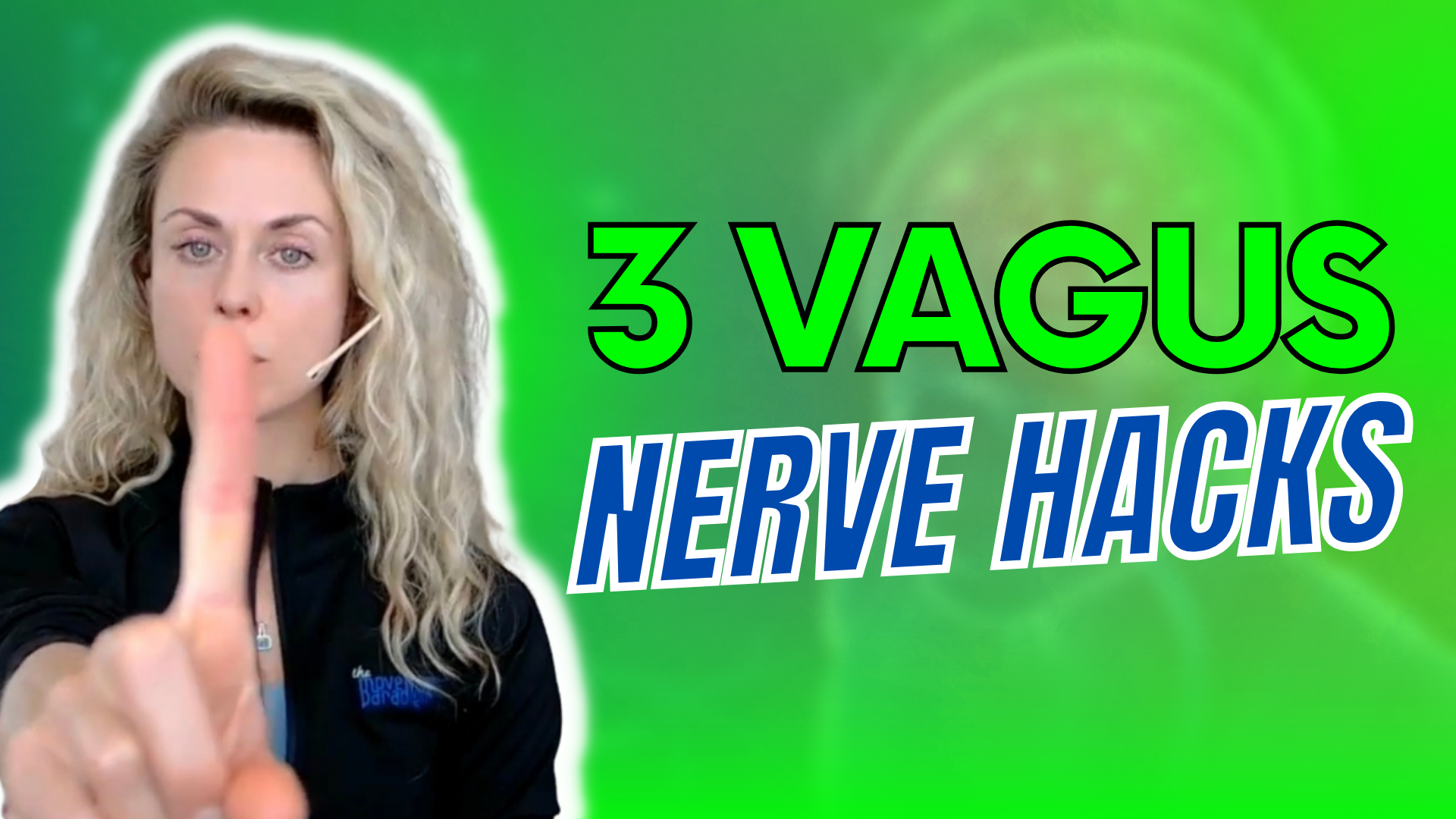Are you experiencing some kind of dysregulation in your nervous system? Perhaps you’re feeling dizziness, blood pressure fluctuations, or even heart rate fluctuations like bradycardia, where your heart rate is low, or tachycardia, where your heart rate is high. You might even be experiencing other unexplained digestive symptoms.
Let’s dive into three simple vagus nerve exercises that can help shift you from a dysregulated nervous system state to a state of social engagement, where you are grounded, connected, mindful, and in a state of safety and connection.
Rather watch or listen?
The oculocardiac reflex
For the purpose of today’s blog, we are going to jump right into the vagus nerve exercises. You can check out all of my other blogs on somatic exercises and vagus nerve exercises to help you regulate.
Today, we’re going to focus on the oculocardiac reflex. This reflex is essentially influenced through the eyes and has an impact on our state of social engagement. It’s also connected to other cranial nerves, such as the trigeminal nerve and the vagus nerve, and it specifically influences our heart rate and autonomic functions.
Vagus nerve exercise 1
The first technique we’re going to discuss was initially described in 1908. When applying pressure to the extraocular muscles, it can lead to a potential 20% decrease in heart rate.
When performing this exercise, please ensure you apply very gentle pressure. Use a completely flat hand and gently cover your eyes, avoiding any poking or excessive force. Apply gentle pressure and hold it until you observe a sign of relaxation, which could manifest as a sigh, a swallow, a yawn, a deep breath, or a general state of relaxation.
Vagus nerve exercise 2
The second exercise is a convergence exercise. To perform this, you can use either your finger or a pen. Begin by having your eyes fixated on the tip of your chosen object. Slowly bring the object closer to your eyes while maintaining your focus. Continue observing until you reach a point where the object appears as one instead of double vision. You can repeat this exercise until you experience a relaxation response.
Vagus nerve exercise 3
Moving on to the third exercise, which is the cheek lift, this integrates everything we’ve discussed so far. When we consider the cranial nerves associated with the state of social engagement, it involves multiple cranial nerves, with facial expressions playing a significant role. Our facial expressions influence how we regulate our nervous system and co-regulate with others when we interact in social settings.
Start by bringing your tongue all the way to the tip of your nose. Next, focus on lifting your cheeks as high as possible. You’ll simultaneously raise your tongue and your cheeks. Lastly, turn your head to the final position and try to hold it there for at least 30 seconds or more. Begin with the tongue, then the cheeks, and finally, the head turn. After approximately 30 seconds, return to the center and repeat the exercise on the other side.
Key takeaway
I recommend doing all three of these exercises. Begin with the first one and pay attention to how you feel. Check if you experience that sign of relaxation or a drop in heart rate, which you can measure. As mentioned, the heart rate can decrease by up to 20%, so ensure you feel comfortable and safe. Proceed to the second exercise and reassess to make sure everything still feels good. If you’re still feeling great, move on to the third exercise to integrate everything together.
To incorporate these exercises into your daily life, consider your facial expressions in your day-to-day interactions. Aim to smile and minimize significant frowns and expressions throughout the day. Softening your facial expressions can have a significant impact on your nervous system, influencing your own emotions as well as how you affect those around you. This, in turn, can positively impact various aspects we discussed earlier, such as regulating heart rate and blood pressure, optimizing immune function, and promoting digestive health.
If you found this information helpful, please be sure to give it a like, share it with others, leave a comment below, and, of course, subscribe to our YouTube channel, The Movement Paradigm®, for weekly tips on mindset, nutrition, and movement.
If you’re looking for personalized guidance on your journey and feel that you need an individualized approach, please don’t hesitate to reach out to us. We would welcome the opportunity to assist you.
If you’re interested in accessing a wide range of programs, including those on nutrition, somatics, and vagus nerve exercises, as well as movement programs to help you optimize your overall wellness, consider checking out our app, The Movement Paradigm, available on both Apple and Google platforms.
Other things that might interest you:

